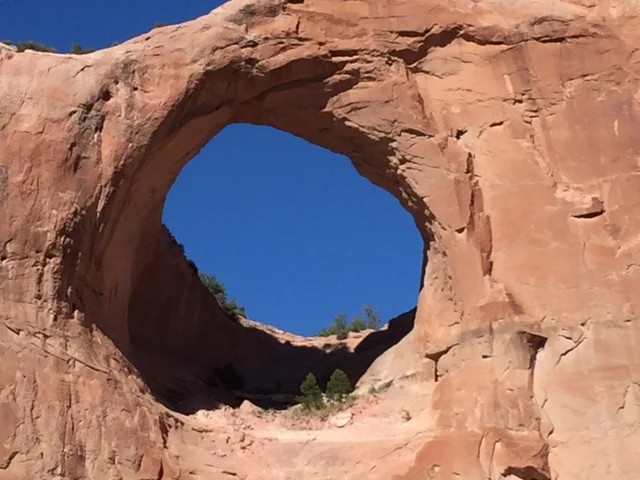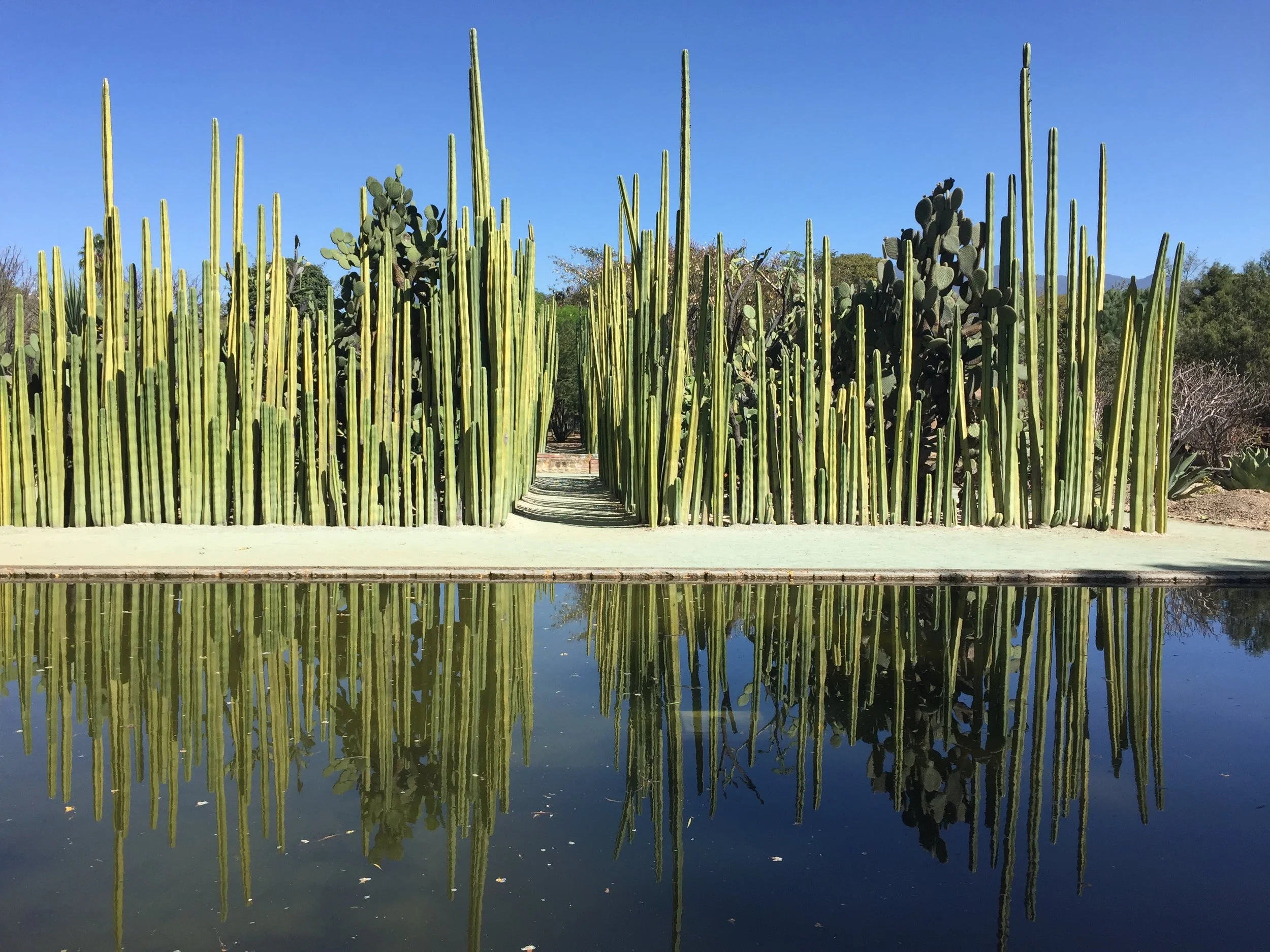“Casa Azul” Dazzling Blues!
Casa Azul, Frida Kahlo, Credit: Sandra Laurin
In my recent piece, “RED!!!”, I touched on the cultural and symbolic qualities commonly associated with red: love, passion, and danger. I also explored the botanical and entomological source for its dye and paint. For example, the “perfect red” is derived from an insect, the cochineal, that thrives on nopal or prickly pear in Mexico. Used for centuries by the Mayans and later the Aztecs, it was soon coveted by the Spanish who traded it in Europe. The second most exported good after silver, it eventually was traded on stock exchanges such as London’s and Amsterdam’s.
Unlike its opposite on the color wheel, red, blue signifies for many cultures harmony, serenity, faithfulness, and infinity — and sadness. In English, we say we feel “blue”. (I haven’t heard this in other languages however). Worldwide, blues music, set in a minor key, expresses a mournful mood. The emotion is generally one of unhappiness or melancholy often due to problems in love. (“Mood Indigo” by Duke Ellington is a perfect example.)
Once again, as in “RED!!!”, I’d like to touch on the symbolic qualities of a color, in this case blue, as well as the various sources of its dyes. These range from plants such as “woad” and indigo to a Mediterranean snail called “hilazon”, and finally the mineral: lapis lazuli or azurite.
Lapis lazuli
Blue is considered the most popular color for both men and women in the West. Its extensive palette includes the shades: azure, indigo, cerulean, lapis lazuli, ultramarine, Prussian blue, Egyptian blue, sky blue, aquamarine, turquoise, cobalt, teal, and sapphire, among others. Oh - and we have navy blue for jeans and New York’s policemen uniforms.
So, why my title “Casa Azul” with a photograph by Sandra Laurin of Frida Kahlo’s house in Mexico City? Metaphorically, we live in a far more vast “casa” that is not limited by walls and instead overflows with a staggering expanse of blues: the sky, oceans, seas, lakes and rivers. Hence, no surprise the name “Blue Planet”.


One of the most stunning and dazzling blues I’ve ever photographed is the sky in the Southwest such as in Acoma, New Mexico, an early Spanish settlement and Canyon de Chelly in Navaho country in Arizona.



Three thousand years ago, the Egyptians recognized the spiritual qualities of blue. It was not only associated with the sky but with divinity. The Egyptian god, Amun could make his skin blue so that he could fly, invisible, across the sky. Blue would also protect against evil; still today many people around the Mediterranean wear a blue amulet, representing the eye of God, to protect them from misfortune. The Islamic culture venerated blue as seen below in the “Blue Mosque” in Istanbul and in Herat’s tile mosaics from Afghanistan.



In the early Middle Ages, the nobility and clergy wore red or purple, while blue clothing colored with poor-quality dyes made from the woad plant was more common for the the poor. (Think of the word, “blue collar” as well.) Only in the 12th century, with the building of the Saint Denis Basilica in Paris and later Chartres and other Gothic churches featuring stained glass windows dyed with cobalt, adjacent to red glass, did the color gain in prestige. Instead of painting the Virgin Mary in somber black, gray or dark green, artists, thanks to more expensive pigments from Asia, began to depict her in ultramarine robes, a symbol of virtue, purity and holiness. Soon to follow suit, French kings such as Louis the IX or Saint Louis, also began to don blue. It was now officially royal.
A few sources of blue dyes:
Cerulean also known as“Egyptian Blue” was created in Ancient Egypt. It was the first synthetic blue pigment made up of a mixture of silica, copper, lime and alkali. Another historical blue dye was made from flowering plants, such as “woad” leaves found in Europe. In medieval times, woad-growing regions were common in England, Germany and France. Towns such as Toulouse grew prosperous from the woad trade. This soon changed when other sources were traded in Europe.
Highly rich in pigment, lapis lazuli or azurite, a semi-precious stone, mined in Afghanistan for more than three thousand years, was ground to make a dye. Another highly prized dye also from Asia but plant-based was indigo. In India, the indigo leaves were soaked in water, fermented, pressed into cakes then dried into bricks which were easily exported. It became popular when Vasco de Gama opened the trade route to the East. Later, in the 17th century, the British, Spanish, and Dutch established indigo plantations in Jamaica, South Carolina, the Virgin Islands and South America. American indigo began to arrive on European shores as well as, of course, throughout the New World.
Below are a few of my own images in nature that feature blue: the Amalfi coast, Italy, a pond in the Berkshires, MA, an infinity pool with the Pacific ocean in the background and a botanical garden in Oaxaca, Mexico.




Inspired by nature, are adobe houses highlighted by blue doors and windows in New Mexico; masks and face-painting in Mexico, and a turquoise wall with the painter displaying his hands in San Miguel de Allende.






According to certain rabbinic sages, blue is the color of God's glory. Meditating on this color is said to convey a glimpse of the "pavement of sapphire, like the very sky for purity", akin to the Throne of God.
For “Red!!!”, please check: https://www.honeysharp.com/journal/2018/12/9/red



